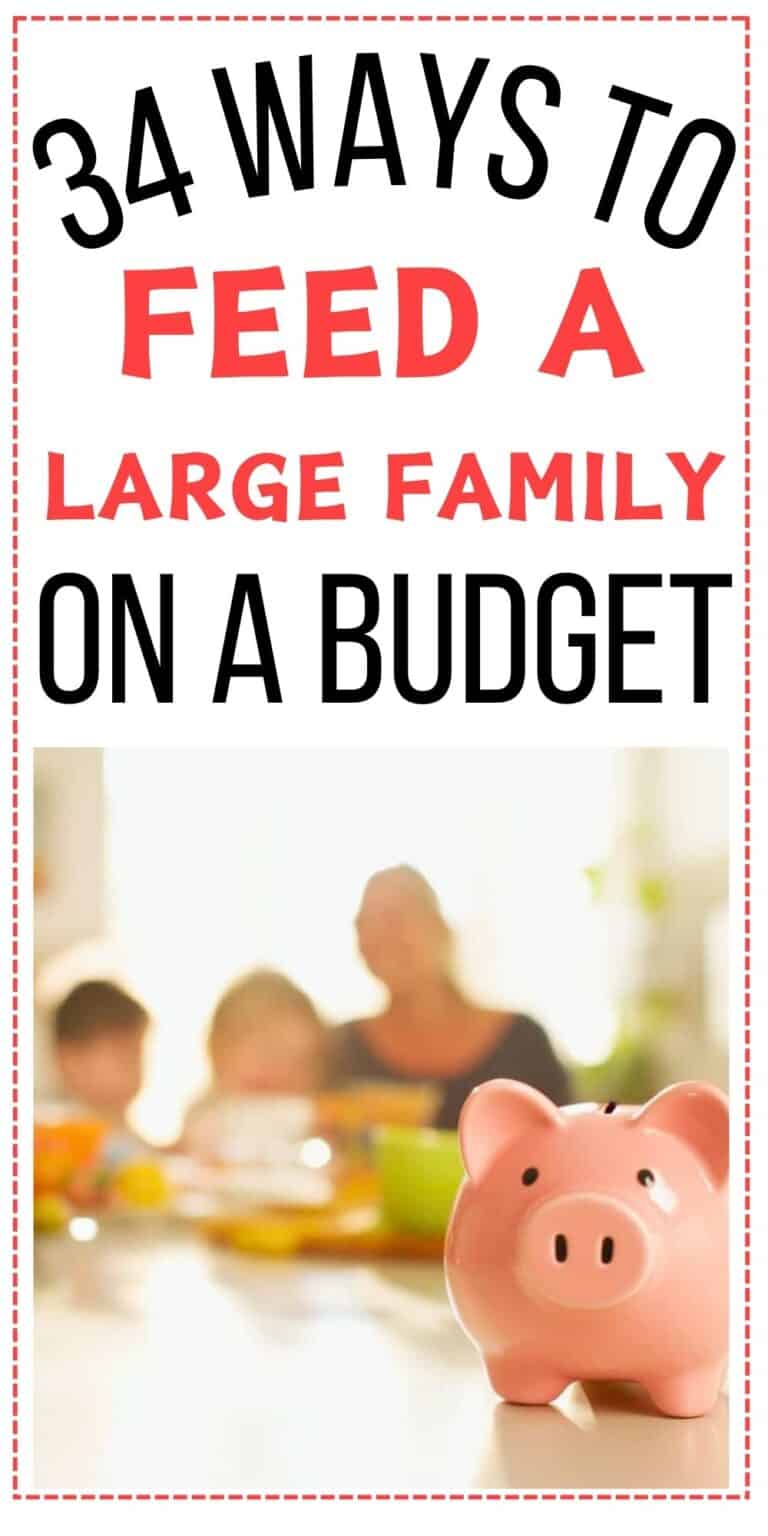Feeding a family on a tight budget can feel like a never-ending puzzle, right?
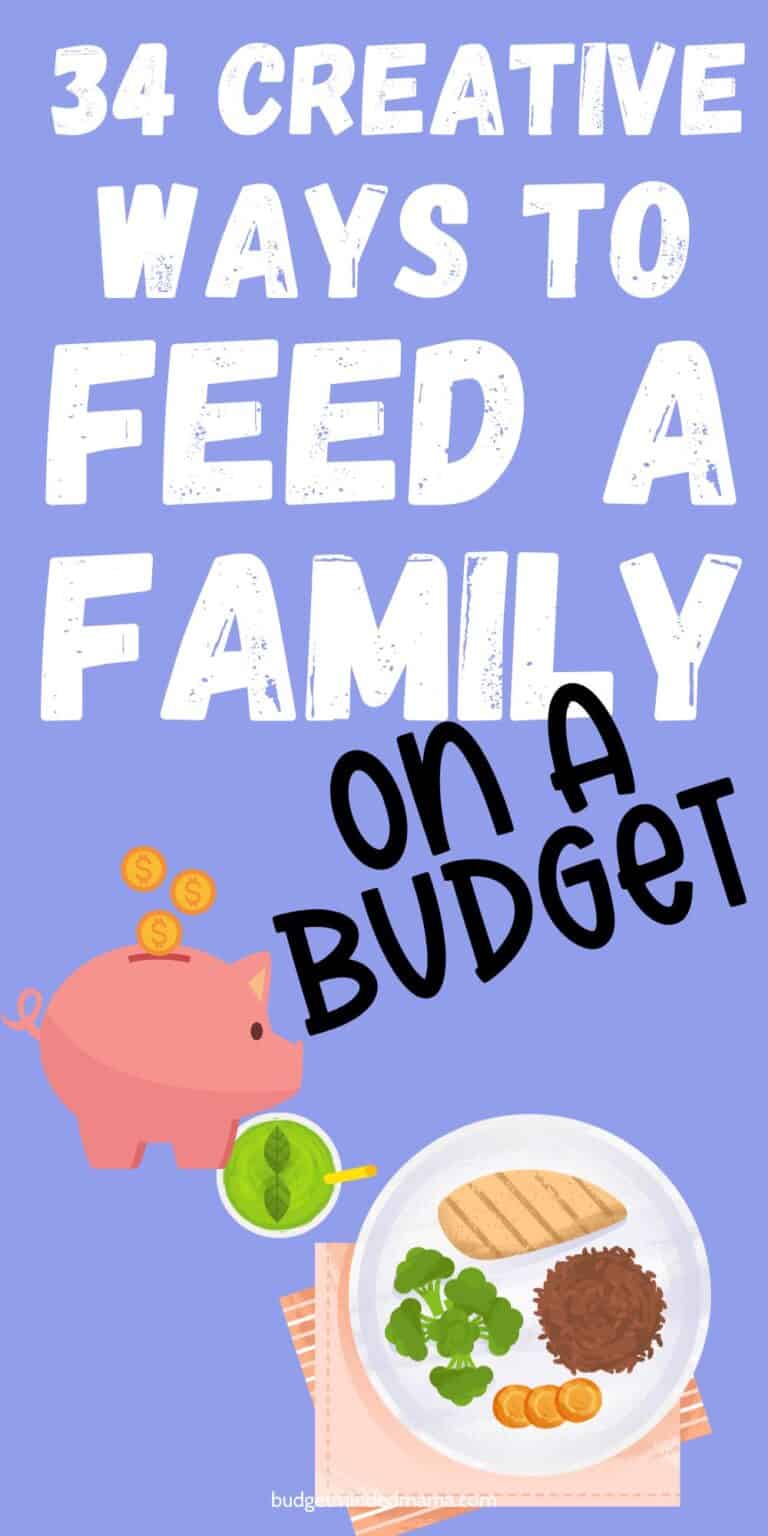
I’ve definitely been there, trying to make sure everyone is full, healthy, and happy without blowing the food budget.
No matter if you’re feeding a family of 5 on budget or a family of 4, trying to stretch your grocery budget can be stressful.
But don’t worry!
Over the years, I’ve picked up a few tricks that make cooking on a budget not only doable, but actually kind of fun.
From meal planning hacks to sneaky ways to use leftovers, I’ve got you covered.
You’d be surprised how many cheap meals you can whip up that are tasty and satisfying.
So, if you’re ready to get creative with your food budget, let’s jump in!
These tips will have you feeding your crew without breaking the bank!
Meal Prep and Plan Ahead

A little planning goes a long way when you’re trying to stretch your food budget.
Taking time to map out budget meals for the week helps cut down on food waste and last-minute takeout splurges.
It also makes grocery shopping faster and more efficient since you know exactly what you need.
1. Create a Rotating Meal Plan
Instead of starting from scratch every week, put together a list of 10 to 15 meals your family loves and cycle through them.
This keeps things fresh while also making meal planning easier since you already know what works.
A mix of quick meals, budget-friendly staples, and leftovers nights can help balance costs.
Having this go-to list means less stress and fewer last-minute, expensive grocery runs.
2. Use a Grocery List and Stick to It
Impulse purchases can sneak up fast, and they add up before you know it!
Making a list before you shop helps keep you focused on what you actually need. T
ry organizing it by category (produce, dairy, pantry, etc.) to speed up shopping and avoid wandering into tempting aisles.
If you tend to grab extra things, set a small “fun” budget for an occasional treat so you don’t completely go off track.
3. Prep Ingredients in Bulk
Washing, chopping, and portioning out ingredients ahead of time makes cooking during the week way easier.
Spend an hour or two prepping things like veggies, grains, and proteins so you can throw meals together quickly.
If you love salads, prepping everything at once means you can have ready-to-go lunches without the hassle.
It’s a small time investment that saves money (and stress) all week long!
Cook in Batches

Cooking in bulk is one of the easiest ways to save money and time in the kitchen.
When you make a big batch of food, you can use leftovers for lunches, freeze extras for future meals, or repurpose them into something new.
This helps cut down on food waste and keeps you from resorting to expensive convenience foods.
4. Double Your Recipes
If you’re already cooking, why not make extra?
Doubling recipes like soups, casseroles, and chili means you get multiple meals with the same amount of effort.
Freeze half for a future busy night or pack it up for quick lunches throughout the week.
It’s one of the easiest ways to make sure you always have something homemade on hand.
5. Use Freezer-Safe Containers
Good storage makes all the difference when it comes to batch cooking.
Invest in quality freezer bags, glass containers, or meal prep containers that stack well and keep food fresh.
Label everything with the date so you know what needs to be used up first.
A little organization prevents that dreaded “mystery container” situation where you have no idea what’s inside.
6. Label Everything With Dates
If you’ve ever found a frozen block of something in the back of the freezer and had no clue when you made it, you know how important labels are!
Write the date and meal name on every container so you can keep track of what’s still good.
Most home-cooked frozen meals are best within three months, so rotate older meals to the front.
Keeping things organized helps you actually use what you’ve prepped instead of letting it go to waste.
Embrace Meatless Meals

Meat is often one of the most expensive grocery items, so swapping in plant-based meals can really cut costs.
You don’t have to go full vegetarian—just a couple of meatless meals each week can make a difference.
Beans, lentils, eggs, and tofu are great, affordable protein sources that work in so many dishes.
7. Try One Meatless Meal a Week
Start small by picking one night a week to go meat-free.
Dishes like veggie stir-fries, pasta with marinara, or bean-based soups are easy and filling.
Over time, you’ll build a list of plant-based meals that your family actually enjoys.
If they don’t even notice the meat is missing, you know it’s a keeper!
8. Get Creative With Legumes
Beans and lentils are packed with protein and cost just a fraction of what meat does.
They work in everything from tacos to soups to pasta dishes.
Try adding lentils to spaghetti sauce or swapping half the ground beef in a recipe with black beans to save money.
They’re also super filling, so you won’t even miss the extra meat!
9. Use Eggs or Tofu as Protein
Eggs aren’t just for breakfast—they make a great, budget-friendly protein for any meal.
Scrambled eggs with veggies, omelets, and frittatas are easy and cheap dinner options.
Tofu is another great swap, especially in stir-fries or curries where it soaks up all the flavor.
Both options are affordable, packed with protein, and easy to cook.
Shop Smart With Frozen Veggies
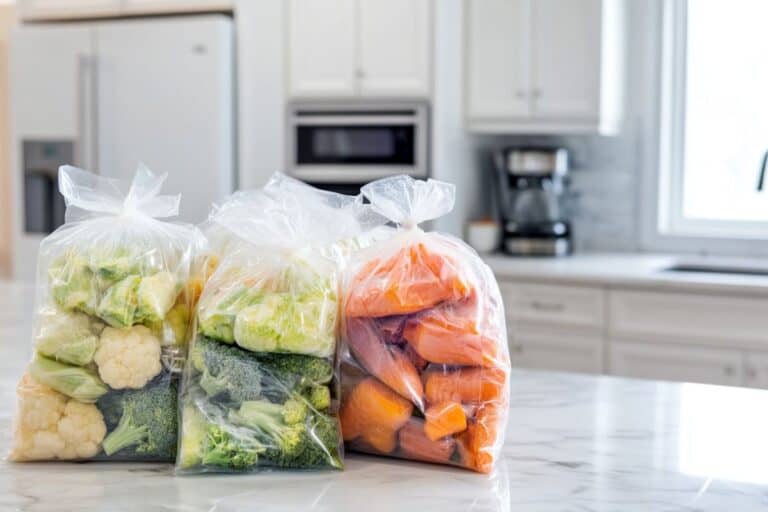
Fresh produce is great, but it’s not always the most budget-friendly option—especially if it spoils before you can use it.
Frozen veggies are just as nutritious, way cheaper, and last for months.
Keeping a stash of frozen vegetables means you always have healthy options on hand.
10. Buy Frozen Veggies in Bulk
Buying the big bags of frozen veggies gives you more for your money and cuts down on trips to the store.
They’re great for quick stir-fries, soups, or side dishes.
Since they don’t go bad quickly, you won’t have to worry about wasting food.
Just grab what you need and throw the rest back in the freezer!
11. Choose Mixed Veggie Bags
Mixed frozen veggie blends are a lifesaver when you need a quick and easy meal.
They work great in soups, casseroles, or fried rice without having to buy a ton of different vegetables separately.
Look for blends that fit your favorite meals—Asian stir-fry mixes, fajita blends, or classic mixed vegetables.
It’s a simple way to add variety without extra effort.
12. Stock Up on Frozen Fruits, Too
Frozen fruit is perfect for smoothies, baking, and even snacking.
It’s often cheaper than fresh, especially for out-of-season fruits like berries and mangoes.
Toss some in yogurt, blend into a smoothie, or use it for homemade fruit crisp.
Since it won’t spoil quickly, you can always have fruit on hand without worrying about waste.
Use Leftovers Creatively
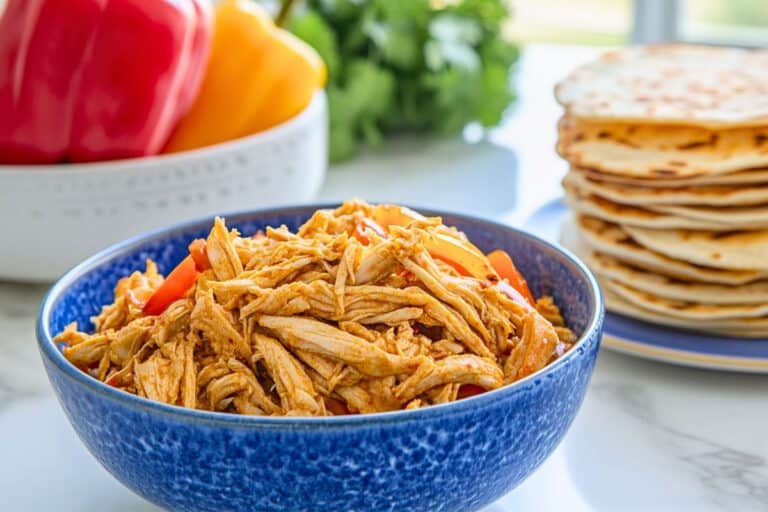
Leftovers don’t have to be boring! Instead of letting them sit in the fridge until they go bad, get creative and turn them into something new.
A little planning can turn last night’s dinner into today’s lunch or even a completely different meal.
It’s an easy way to reduce food waste, save money, and keep meals interesting.
13. Transform Roasted Veggies Into Soups
Leftover roasted vegetables make the perfect base for a quick and hearty soup.
Just blend them with some broth, season to taste, and you’ve got a new meal in minutes.
Add in beans, rice, or pasta to bulk it up if needed.
It’s a great way to use up odds and ends in the fridge before they go bad.
14. Turn Chicken Leftovers Into Salad or Wraps
Shred leftover chicken and mix it with some mayo, Greek yogurt, or a light dressing for an easy chicken salad.
Serve it on sandwiches, wraps, or over a bed of greens for a quick, budget-friendly meal.
You can also toss it into quesadillas or stir-fries for an effortless way to use it up.
It’s a simple way to stretch a single meal into multiple lunches or dinners.
15. Get Creative With Grains
Leftover rice, quinoa, or pasta can be the base for new meals instead of going to waste.
Toss cold rice into a stir-fry, use quinoa in a salad, or turn extra pasta into a baked casserole.
You can even make rice pudding for a sweet treat!
Grains are super versatile, so don’t let them sit in the fridge untouched.
16. Make a “Leftovers Night”
Instead of cooking something new, designate one night a week as “leftovers night” where everyone gets to pick and choose what’s in the fridge.
You can mix and match different meals, reheat portions, or add fresh toppings to change things up.
It’s an easy way to clear out the fridge and avoid food waste. Plus, it gives you a break from cooking!
17. Use Leftover Bread Wisely
Don’t toss stale bread—it can still be put to good use!
Turn it into homemade croutons, breadcrumbs, or even a delicious bread pudding.
French toast is another great way to revive older bread while making breakfast (or dinner) extra tasty.
Keeping a few ideas for repurposing bread can help you avoid wasting it.
Buy in Bulk
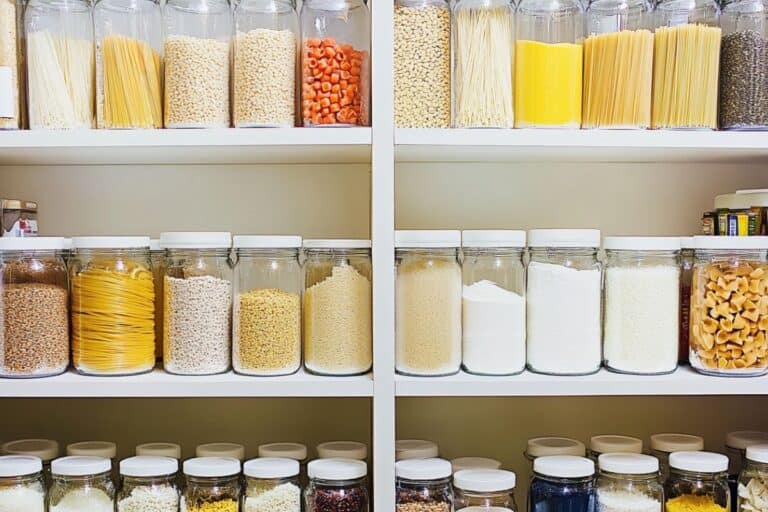
Buying in bulk can save serious money on pantry staples and frequently used ingredients.
It’s especially helpful for non-perishable items like rice, pasta, beans, and flour.
If you have freezer space, buying meat in bulk can also cut costs.
Just make sure to store everything properly so nothing goes to waste.
18. Buy Pantry Staples Like Rice, Pasta, and Oats
These staples are cheap, last a long time, and work in so many meals.
Buying them in bulk lowers the price per serving and means fewer grocery store trips.
Store them in airtight containers to keep them fresh for months.
Having a stocked pantry makes it easier to throw together meals without an extra shopping run.
19. Invest in a Deep Freezer
If you have the space, a deep freezer lets you take full advantage of bulk deals on meats, veggies, and frozen meals.
Freezing extra portions of home-cooked meals also makes life easier when you’re busy.
Label everything so you don’t forget what’s in there. A well-stocked freezer can be a lifesaver when money or time is tight.
20. Check Out Warehouse Stores for Bulk Buys
Membership stores like Costco or Sam’s Club offer big savings on bulk items.
Compare prices per unit to make sure you’re actually saving money.
Some things—like spices, canned goods, and frozen foods—are worth buying in bulk, while fresh produce might not last long enough.
Buy only what you know you’ll use to avoid waste.
Make Your Own Snacks

Pre-packaged snacks are convenient but often overpriced.
Making your own saves money and lets you control the ingredients.
Whether it’s granola bars, popcorn, or roasted nuts, homemade snacks can be just as easy to grab when hunger strikes.
Plus, they’re usually healthier, too!
21. Batch-Bake Snacks
Make a big batch of homemade granola bars, muffins, or energy bites at the start of the week.
Store them in the fridge or freezer for quick grab-and-go options.
It’s way cheaper than buying individual snack packs.
And you can customize them with whatever ingredients your family loves.
22. Snack on Fruits and Veggies
Prepping fruits and veggies ahead of time makes it more likely that you’ll actually eat them.
Wash and cut carrots, celery, or bell peppers and store them in containers for easy snacking.
Apples, bananas, and oranges are great budget-friendly options that don’t need prep.
Pair them with peanut butter or yogurt for a filling, healthy snack.
23. Roast Your Own Nuts or Seeds
Buying plain nuts and roasting them at home is much cheaper than buying flavored store-bought versions.
Toss them with a little salt, cinnamon, or chili powder for extra flavor.
Roasted sunflower or pumpkin seeds are another great budget-friendly snack.
Making them at home lets you control the seasonings and avoid extra additives.
24. Make Your Own Popcorn
Buying plain popcorn kernels and popping them on the stove or in an air popper is way cheaper than microwave popcorn.
You can add your own seasonings like cinnamon, cheese powder, or even a little melted butter.
It’s a super affordable snack that’s easy to make in big batches.
25. Freeze Yogurt or Fruit for Grab-and-Go Treats
Frozen yogurt pops or fruit slices are a great alternative to expensive store-bought treats.
Freeze banana slices, grapes, or berries for a refreshing, naturally sweet snack.
You can also mix yogurt with fruit and freeze it into popsicle molds.
It’s an easy, budget-friendly way to satisfy a sweet craving.
Shop the Sales

Paying attention to sales and discounts can make a huge difference in your grocery budget.
Many stores cycle through discounts on meats, pantry staples, and fresh produce.
A little planning can help you stock up when prices are low so you’re not paying full price later.
26. Use Coupons and Discounts
Check store apps, digital coupons, and paper flyers for extra savings.
Many grocery stores offer loyalty programs that give you personalized deals.
If you find a great discount on something you use often, stock up.
A few dollars saved on each trip adds up over time!
27. Buy Seasonal Items
Fruits and vegetables are way cheaper when they’re in season.
Plan meals around what’s freshest and most affordable at the time.
For example, berries are cheaper in the summer, while squash and root vegetables cost less in the fall.
Buying in-season also means better flavor and quality.
28. Sign Up for Store Loyalty Programs
Most grocery stores offer rewards programs that give discounts, cashback, or points toward future purchases.
Some also have special member-only deals on certain items.
Signing up is usually free and can lead to significant savings over time.
If you shop at the same stores often, it’s definitely worth it!
Grow Your Own Herbs or Veggies

Growing your own food doesn’t require a giant backyard or tons of gardening skills.
Even a few pots of herbs on a windowsill can save money and add fresh flavor to your meals.
If you have space, growing easy veggies like lettuce, tomatoes, or zucchini can cut down on grocery costs.
29. Start With Easy-to-Grow Herbs
Herbs like basil, mint, and rosemary are low-maintenance and thrive in small spaces. Y
ou can grow them in pots on your windowsill, balcony, or backyard.
Fresh herbs can be pricey at the store, but growing your own means you’ll always have them on hand.
Snip what you need, and let the rest keep growing!
30. Use a Community Garden
If you don’t have space at home, check if your town has a community garden where you can rent a small plot.
It’s a great way to grow your own food without needing a backyard.
You’ll also meet other local gardeners who can share tips and ideas.
Many community gardens even have free or low-cost starter plants to help you get going.
31. Reuse Kitchen Scraps
Did you know you can regrow some veggies from scraps?
Green onions, celery, and lettuce can be placed in water to sprout new growth.
Once they start growing, you can plant them in soil for an endless supply.
It’s a fun, no-cost way to stretch your groceries a little further!
Use Store Brands

Store-brand groceries are often just as good as name brands, but they come at a much lower price.
In many cases, they’re even made by the same manufacturers as the big-name products.
Switching to store brands for pantry staples, dairy, and frozen foods can lead to big savings over time.
32. Start With Pantry Staples
Items like flour, sugar, pasta, canned beans, and rice are great places to start with store brands.
The quality is often identical to name brands, but the price is significantly lower.
Since these are ingredients you use often, the savings add up quickly.
Once you see how similar they are, you might start swapping out even more products.
33. Do a Taste Test
If your family is hesitant to switch brands, try a blind taste test with a few different items.
Pick a couple of products—like peanut butter, cereal, or cheese—and see if anyone can tell the difference.
You’ll probably be surprised at how often store brands taste just as good (or even better).
Once you find winners, you’ll feel confident about making more swaps.
34. Stick to Trusted Store Brands
Some store brands are well-known for offering great quality at a lower price.
Look for stores with their own in-house brands that get good reviews.
Many retailers even have specialty lines for organic or gourmet products at lower prices than national brands.
Finding a few reliable store-brand favorites can help lower your grocery bill without sacrificing taste.
Smart Choices Make It Easier to Feed Your Family on a Budget
Saving money on groceries doesn’t mean sacrificing flavor, nutrition, or variety—it just takes a little creativity and planning.
By meal prepping, cooking in batches, and making the most of leftovers, you can stretch your food budget without feeling restricted.
Simple swaps like buying in bulk, choosing store brands, and growing your own herbs can make a big difference over time.
With these strategies, you’ll be able to feed your family on a budget while still serving up meals they love!

